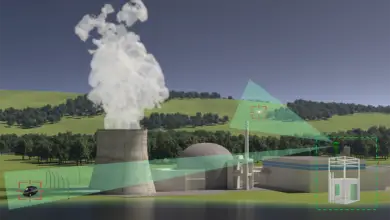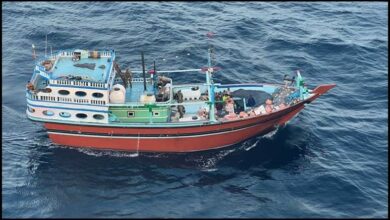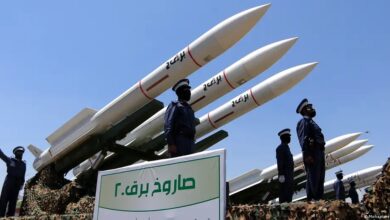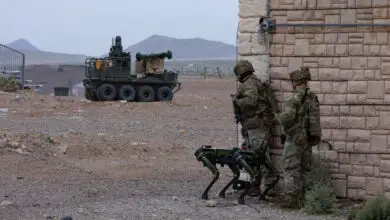Iran shoots down US RQ-4 Global Hawk surveillance drone
Iran said it had shot down a U.S. surveillance drone that violated its airspace near the strategic Strait of Hormuz, with the U.S. military saying the RQ-4 Global Hawk was more than 20 miles from the Iranian coast.
The Islamic Revolutionary Guard Corps said in a Thursday, June 20 statement that the air force downed a RQ-4 Global Hawk drone over the Kuh-e Mubarak region in Iran’s southern Homozgan province.
Fox News reporter Lucas Tomlinson cited an unnamed U.S. official as saying the drone was a U.S. Navy MQ-4C Triton high-altitude drone, and that it was shot down by Iranian surface-to-air missile in international airspace over the Strait of Hormuz. The Triton is the U.S. Navy’s version of the Global Hawk.
In a later statement, U.S. Central Command spokesperson Captain Bill Urban said, “U.S. Central Command can confirm that a U.S. Navy Broad Area Maritime Surveillance (or BAMS-D) ISR aircraft was shot down by an Iranian surface-to-air missile system while operating in international airspace over the Strait of Hormuz at approximately 11:35 p.m. GMT on June 19, 2019.”
“Iranian reports that the aircraft was over Iran are false,” he said, adding, “This was an unprovoked attack on a U.S. surveillance asset in international airspace.”
IRGC Commander Major General Hossein Salami said Thursday that “any enemy who trespasses our countries’ borders will not have safety and will be destroyed.”
Iranian Foreign Minister Javad Zarif said “sections” of the downed drone had been recovered from Iran’s territorial waters.
The Northrop Grumman RQ-4 Global Hawk is an unmanned high-altitude long-endurance surveillance aircraft that first flew in February 1998 and has been in active service with the U.S. military since 2001.
With an operational range of 12,300 nautical miles, the Global Hawk can fly at high altitudes for over 30 hours and is capable of near-real-time high-resolution surveillance in all types of weather.
The MQ-4C Triton, first used by the Navy in 2017, features enhanced capabilities, including lightning protection systems to allow the aircraft to descend for closer viewing of targets at sea. It has an operational range of 8,200 nautical miles and can fly over 24 hours at a time, at altitudes higher than 10 miles, according to Northrop.
The BAMS-D is a RQ-4A Global Hawk High-Altitude, Long, Endurance Unmanned Aircraft System used to develop the MQ-4C and in operation while the bulk of the Tritons ordered by the Navy remain in production.
U.S. Lieutenant General Joseph Guastella, Commander of U.S. Air Forces Central Command said in a later statement that the Global Hawk was on a surveillance mission “in the vicinity of recent IRGC maritime attacks when it was shot down by an IRGC surface to air missile fired from a location in the vicinity of Goruk [Gerouk], Iran.”
“At the time of the intercept, the RQ-4 was operating at high-altitude approximately 34 kilometers from the nearest point of land on the Iranian coast,” Guastella said.

The Pentagon released a video purporting to show the smoke trail left after the drone was shot down.
The IRGC later released a video it said was of the drone interception by its Khordad 3 air defense system.
The Khordad 3 or Ra’d (Thunder) is an indigenous mobile air defense system the IRGC says is capable of firing Sayyad 2 surface-to-air missiles along with the older Taer 2 surface-to-air missiles. The Sayyad 2 has a range of 75 km while the Taer 2 has a range of 50 km.
The newest photo of the #SevomeKhordad air defense system, the killer of the #RQ4.
Early this morning the Sevome Khordad air defense system intercepted and shot down an #American Global Hawk drone.
4K Photo: https://t.co/y4ryO8l7Bv pic.twitter.com/tGjsHuof4y
— رسانه نیروهای مسلح ایران (@irMilitaryTube) June 20, 2019
Tensions in the Strait of Hormuz
The Strait of Hormuz, which runs between the Persian Gulf and and Gulf of Oman, is a key shipping route for international commerce.
Tensions between Washington and Tehran have deepened since last year when President Donald Trump announced he was pulling the U.S. out of the 2015 Joint Comprehensive Plan of Action nuclear deal with Iran.
The Trump administration blamed the IRGC for attacks on Japanese and Norwegian fuel tankers in the Gulf of Oman last week, allegations that Iranian officials have denied. The Pentagon said Iran fired a surface-to-air-missile at an American drone the same day.
U.S. Secretary of State Mike Pompeo has also blamed Iran for a Houthi missile attack on a Saudi Arabian airport on June 12. Yemen’s Houthis have been engaged in a war with the Saudi-led coalition since 2015, and Iran denies providing material support to the rebels.
Washington has previously accused Iran of being behind May 12 attacks on four tankers anchored off the United Arab Emirates port of Fujairah at the entrance of the Strait of Hormuz.
The U.S. has responded to the increased tensions by moving more assets to the Persian Gulf, while insisting it does not want a war with Iran. On June 17, in one of his last acts as Acting Defense Secretary, Patrick Shanahan authorized the deployment of around 1,000 additional U.S. troops to the region.
This story was updated throughout the day on June 20, 2019 with additional information.












9 Comments